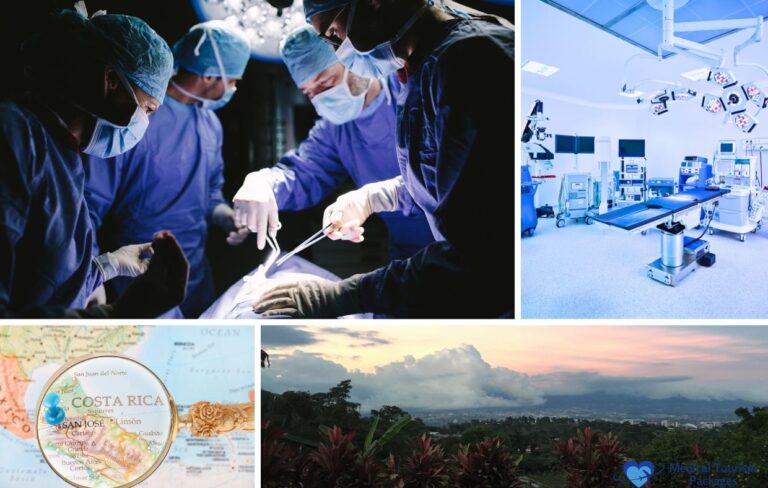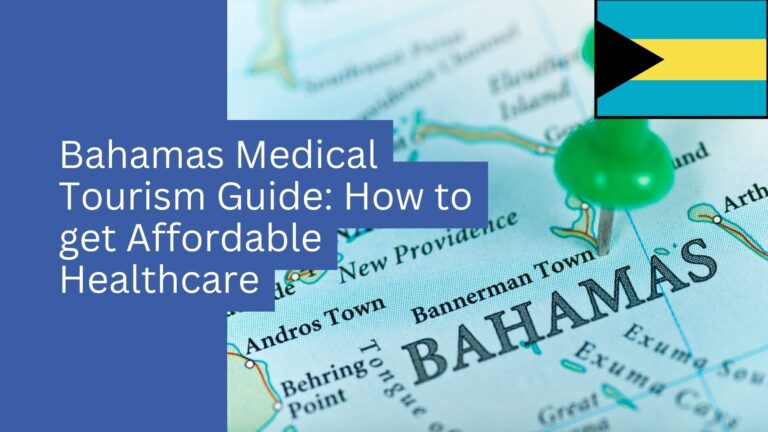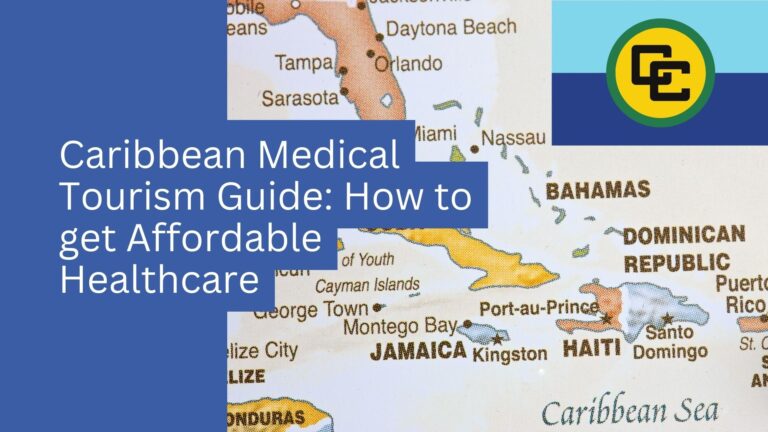Book Appointment Now
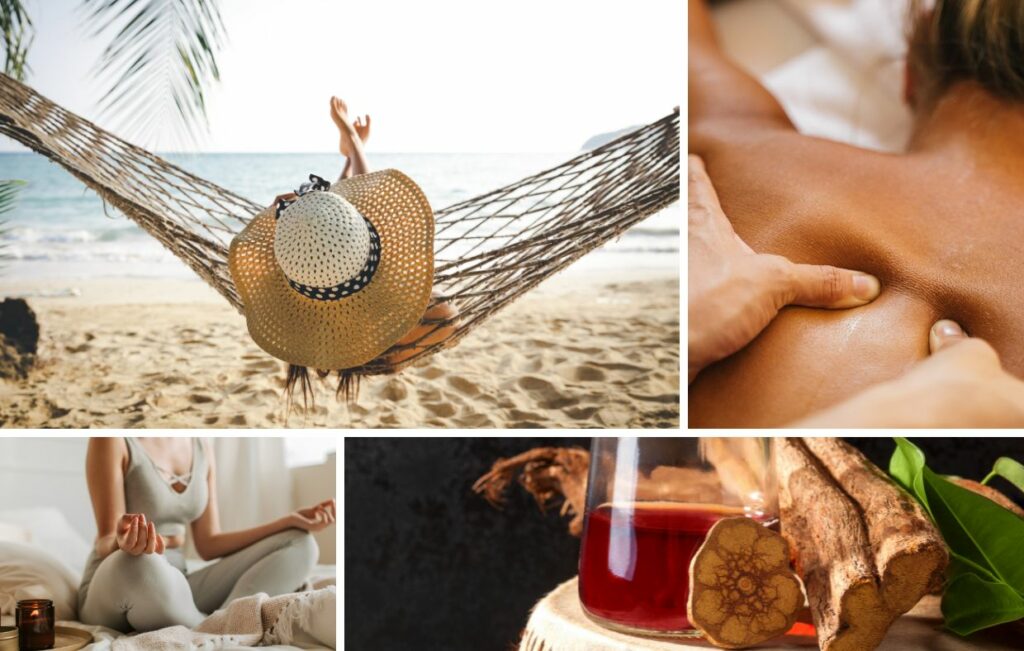
Best Wellness Retreats in Latin America for Mind and Body Recovery
Latin America’s rise as a wellness hotspot isn’t surprising when you consider what the region offers. The combination of natural diversity, cultural heritage, and reasonable prices makes it hard to beat. Costa Rica leads the pack – the country has positioned itself as a wellness tourism powerhouse, with visitor numbers for wellness travel growing almost 10% annually in recent years. Mexico, Colombia, and Brazil aren’t far behind, each drawing travelers with their own unique offerings.
The numbers tell the story: nearly 75% of travelers now say vacations are vital for their mental health. Latin American retreats deliver on this need with settings that range from Pacific beaches to Andean highlands, Amazon rainforests to colonial towns. What really sets the region apart is value – you can experience luxury wellness programs for a fraction of what you’d pay in North America or Europe. A week at a high-end Costa Rican retreat might cost $2,000-3,000, while a comparable program in California could easily run $5,000 or more.
The region’s “pura vida” philosophy – especially strong in Costa Rica – naturally aligns with wellness goals. It’s not just marketing speak; locals genuinely prioritize life balance, connection with nature, and community. This cultural foundation means wellness tourism here feels authentic rather than manufactured.
Comparing the Top Countries: Colombia vs Costa Rica vs Panama
Each country brings something different to the table. Here’s what you need to know:
Costa Rica remains the established leader. With decades of eco-tourism experience, the country has the infrastructure down pat. You’ll find everything from budget yoga camps to ultra-luxury spa resorts. The downside? Popularity means higher prices and busier retreat centers, especially from December through April. A week at Blue Spirit Retreat runs about $2,000, while luxury options like The Retreat Costa Rica charge $500-600 per night.
Panama is the sleeper hit. It offers Costa Rica’s biodiversity without the crowds – think pristine beaches, cloud forests, and indigenous culture, all at lower prices. Sansara Resort in Cambutal exemplifies this: oceanfront yoga and surfing for $2,200-2,800 per week. Panama City’s Tocumen airport serves as a major hub with excellent connections, making arrival easier than many Costa Rican destinations. The wellness scene here is smaller but growing fast.
Colombia brings cultural richness to the wellness game. From Caribbean beach retreats near Santa Marta to mountain sanctuaries outside Medellín, the variety is impressive. Mountains of Hope near Medellín even combines cutting-edge medical treatments (stem cell therapy, IV infusions) with traditional retreat activities. Prices tend to be the most budget-friendly of the three – Gitana del Mar on the coast offers beachfront accommodations with all meals and yoga for around $200 per night.
Here’s a snapshot of notable retreats across the region:
| Retreat (Country) | Focus / Type | Typical Duration | Price (USD) & Inclusions |
|---|---|---|---|
| The Retreat Costa Rica (CR) | Luxury wellness resort (spa, Ayurveda focus) | 5–7 nights | ~$500–$600 per night (all-inclusive wellness program) |
| Nayara Tented Camp (CR) | Luxury jungle spa + yoga program | 3–5 nights | from $3,500 for 3 nights (2 ppl, all-inc.) – includes lodging, meals, activities |
| Blue Spirit Retreat (CR) | Yoga and meditation sanctuary | 7 nights (weekly) | ~$2,000 per week (includes classes, meals, lodging) |
| Rancho La Puerta (Mexico) | Historic fitness & spa ranch | 7 nights (or 3–4) | from $4,450 per week (includes meals, 80+ classes, spa, transfers) |
| Playa Viva (Mexico) | Eco-luxury beach yoga retreat | Flexible (3+ nights) | $265–$620 per night (incl. airport pickup, farm-to-table meals, yoga) |
| Willka T’ika (Peru) | Yoga & cultural retreat (Andes) | 8–9 days packages | from $180 per night (includes lodging, organic meals, tours & ceremonies) |
| Palmaïa – House of AïA (Mexico) | All-inclusive holistic resort | 3–7 nights (any) | ~$500–$700 per night (luxury suite, plant-based dining, unlimited holistic activities) |
| Sansara Resort (Panama) | Boutique surf & yoga retreat | 6–7 nights | ~$2,200–$2,800 per week (includes oceanfront cabana, meals, daily yoga & surfing) |
| Montevalle Wellness (Mexico) | Detox & medical wellness center (wine country) | 1–7 days (flexible) | Day programs from $250 to $545 (IV therapies, detox treatments, meals) |
| Gitana del Mar (Colombia) | Beachfront yoga & spa retreat | 3–7 nights (flexible) | ~$200 per night (incl. private bungalow, all meals, yoga classes; family-friendly) |
What Type of Retreat Fits Your Needs?
Retreats vary widely, offering options from yoga and meditation to Ayurveda and spa therapies. Understanding your personal goals be it: physical wellness, mental clarity, detoxification, or relaxation will help you select the best program to enhance your overall wellbeing.
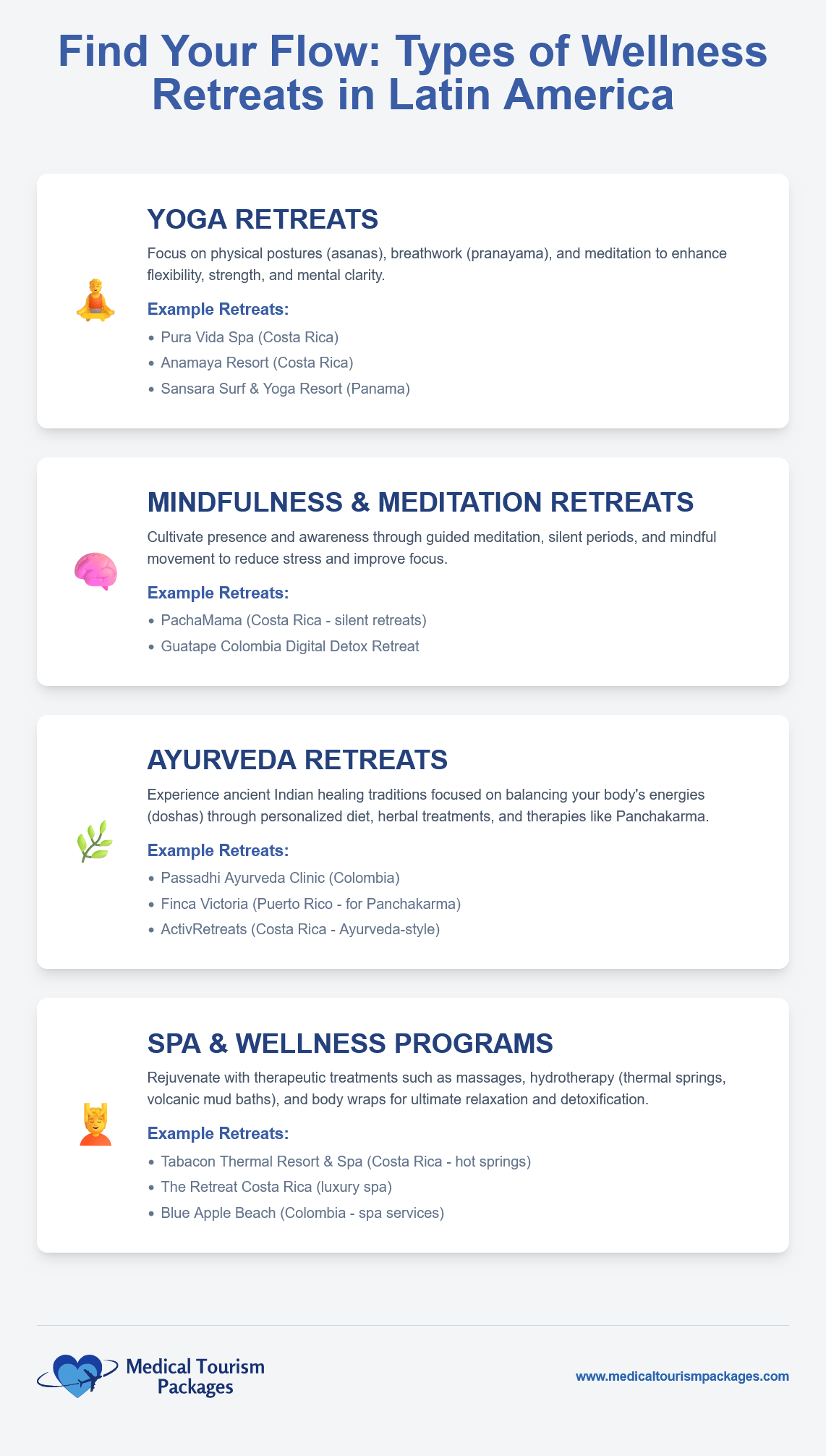
Yoga Retreats
These remain the most popular option. A standard program includes two yoga sessions daily (usually sunrise and late afternoon), plus meditation and breathwork workshops. The eight-day Reconnect program at Beyond Yoga Retreat in Mexico throws in snorkeling trips and waterfall hikes between yoga sessions. Beginners are welcome at most places – instructors know how to modify poses for different skill levels.
Mindfulness and Meditation
If mental clarity is your goal, dedicated meditation retreats offer deeper practice. Some include silent periods (ranging from a few hours to full days). La Casa de Loto in Colombia runs Buddhist-inspired programs, while secular options focus on stress reduction techniques. These retreats spend less time on physical movement and more on mental training – expect guided sits, walking meditation, and teachings on mindfulness in daily life.
Ayurveda Programs
Several Latin American centers now offer authentic Ayurvedic treatments. The Retreat Costa Rica incorporates dosha-specific meals and treatments into their packages. In Peru, KiCHIC resort runs 7-day Panchakarma detox programs – the traditional Ayurvedic cleansing system that includes herbal treatments, special diets, and daily massage. These programs often start with a consultation to determine your body type and imbalances.
Spa and Thermal Wellness
For pure relaxation, spa-focused retreats deliver. Rancho La Puerta in Mexico offers over 80 fitness and wellness classes plus extensive spa facilities. Hacienda AltaGracia in Costa Rica combines luxury accommodations with a world-class spa. In volcanic regions like Costa Rica’s Arenal area, natural hot springs add therapeutic soaking to the menu.
Most retreats blend elements from multiple categories. Surf-and-yoga combos are huge in beach towns. Detox programs might include yoga, colonics, and juice fasting. The key is matching the program to your goals – athletic types might want more fitness components, while stressed executives often prefer spa-heavy itineraries.
Luxury or Budget: Finding Your Price Point
Luxury retreats ($300-600+ per night) deliver the full package. Picture this: private villas with plunge pools, personalized wellness consultations, gourmet organic cuisine, and spa treatments included. Nayara Tented Camp in Costa Rica charges around $3,500 for a 3-night stay but includes a private luxury tent in the rainforest, daily spa treatments, guided nature walks, and farm-fresh meals. Rancho La Puerta’s $4,450 weekly rate covers accommodations, all meals, unlimited classes, and even round-trip airport transportation from San Diego.
These high-end spots often feature celebrity instructors, cutting-edge treatments (think cryotherapy or IV vitamin drips), and staff-to-guest ratios that ensure personalized attention. Guests describe them as “life-changing” – and at these prices, they better be.
Budget retreats ($100-250 per night) strip away the frills but keep the essentials. Eden on the Chocolata in Nicaragua averages $132 per night including yoga and excursions. Accommodations might be rustic cabins or shared rooms, meals are simple but healthy local fare, and you won’t find infinity pools. What you will find: authentic experiences, smaller groups, and passionate instructors who often own the retreat center.
Nicaragua and Guatemala have particularly good budget options – a week-long program might run $700-1,000 all-in. Colombia and Peru also offer excellent value, with some mountain retreats charging under $150 nightly with full board.
The difference isn’t just amenities – it’s atmosphere. Luxury retreats can feel exclusive and polished, while budget spots tend toward communal and grassroots. Neither is inherently better; it depends what resonates with you. Some travelers even mix both – a few days of luxury followed by a week at a simpler center.
How Long Should You Stay?
Weekend Retreats (3-4 days)
Perfect for a quick reset when you can’t take much time off. These pack a lot into a short window – expect multiple daily sessions and limited downtime. Nayara Springs offers a three-night wellness package that jumpstarts relaxation with yoga, spa treatments, and forest bathing. Just know the schedule will be intensive to maximize your brief stay.
One Week Programs (5-8 days)
This is the sweet spot. Seven days gives you time to settle in, establish a routine, and see real changes. Most retreats run Saturday to Saturday for this reason. By day three you’ve adjusted to the schedule; by day seven you’re feeling the cumulative effects. The 8-day Reconnect retreat in Puerto Vallarta is typical – it runs Saturday to the following Sunday, allowing a full week of practice plus arrival/departure days.
Extended Immersions (10-14 days)
For serious transformation, go longer. Two-week programs often focus on specific outcomes like detox, weight loss, or teacher training. Willka T’ika in Peru offers 8-9 day cultural immersion retreats that can be extended. The slower pace allows for integration between intensive sessions. Participants in 14-day programs often report lasting lifestyle changes, not just temporary relaxation.
New to retreats? Start with 3-5 days. Want real results? Aim for 7-8 days. Ready for deep work? Consider 10+ days. Some resorts like Palmaïa in Mexico let you book any length, while others have fixed programs. Always check the schedule – some “relaxing” short retreats are actually quite packed, while certain longer programs build in more rest days.
Solo Travelers, Couples, and Families
Latin America has options for many traveler group types and even solo travelers. From families, to couples to solo travelers, there are tailored options for everyone.
Going Solo
More than 53% of travelers now express interest in solo trips, and retreats are ideal for this. You’ll have built-in community through group classes and shared meals. Safety is excellent at established retreat centers – they provide airport pickups, have staff on-site 24/7, and operate in secure locations. Many solo travelers report making better connections at retreats than on regular vacations. The structure helps too – you’re never wondering what to do next.
Couples
Retreats can strengthen relationships when both partners are on board. Most offer private rooms and some create special packages – Sansara in Panama has a “Luxury & Love” option, for instance. Costa Rican retreats often discount the second person sharing a room (around $1,900 for two versus $1,200 each if solo).
The key is choosing a program you both enjoy. If one person loves yoga while the other prefers hiking, pick a retreat with varied activities. Also ensure there’s unscheduled time to connect privately. Some retreats run couples workshops on communication or partner yoga, but these are usually optional.
Families with Kids
Traditional retreats aren’t designed for children, but family wellness travel is growing. Palmaïa in Mexico stands out with their Waldorf-inspired kids club where children do art and nature activities while parents practice. AmaTierra in Costa Rica offers family packages with kid-friendly yoga classes.
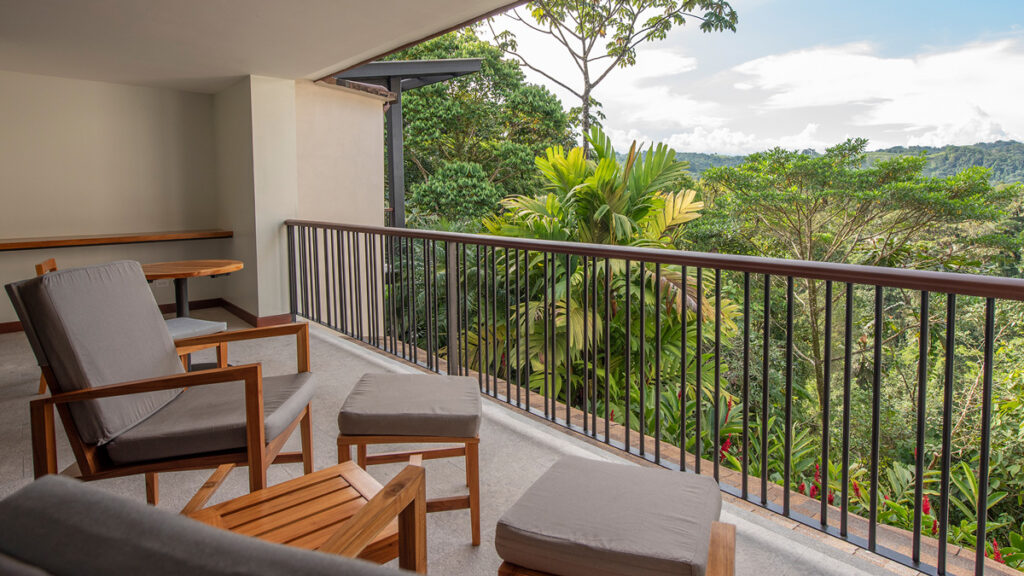
Always verify age policies – many retreats don’t accept children under 12. When kids are welcome, expect a different vibe. You might miss some sessions for parenting duties, and the atmosphere will be more casual. Teen kids often fully participate, while younger ones need adapted activities. Some families book private retreats with customized programming, or bring a relative to help with childcare.
When to Book Your Retreat
Dry Season (December-April)
This is prime time for Central American retreats. Expect sunny days, zero rain, and temperatures around 85°F/30°C. Perfect for beach yoga and hiking. It’s also peak season – retreats fill months ahead and charge premium rates. Book 4-6 months early for popular centers, especially around holidays.
Green Season (May-November)
The “rainy” season has major advantages: lush landscapes, fewer tourists, and discounts up to 30%. Rain usually comes in afternoon bursts, not all-day soakers. Mornings stay clear for yoga. June and November tend to be lighter on rain, while September-October can be quite wet on the Pacific coast.
Note that Peru’s Sacred Valley has opposite seasons – their dry season (best for retreats) runs May-September.
Hurricane Considerations
The Caribbean coast (Yucatán, Dominican Republic) faces hurricane risk August-October. The actual chance of a direct hit is small, but travel insurance makes sense.
Shoulder Seasons
Late November and late April balance good weather with smaller crowds. These transition months often have the best of both worlds – improving conditions but mid-range prices.
For most travelers, December through March guarantees great weather. If you don’t mind afternoon showers and want better deals, try June or late August. There’s no truly bad time – even rainy season has its charms. Meditating to the sound of rain on jungle leaves? Pretty magical.
Combining Wellness with Medical Tourism
Latin America’s affordable healthcare creates interesting opportunities. Picture this: dental work in San José followed by a week recovering at a mountain spa. Or cosmetic surgery in Colombia with post-op healing at a beachfront retreat. The combination makes sense – why recover in a sterile hotel when you could be in paradise?
Some facilities blur the lines entirely. Mountains of Hope in Colombia offers stem cell treatments and IV therapies alongside traditional retreat activities. Montevalle in Mexico combines medical diagnostics with spa programs. Costa Rica excels at this combo, with many clinics partnering with nearby retreats for referrals.
If you’re considering this approach:
- Clear it with your doctor first – they need to approve any physical activities post-procedure
- Choose an appropriate retreat (skip the boot camp style if you’re recovering from surgery)
- Pick a location reasonably close to your medical provider in case you need follow-up
- Book retreats with flexible schedules that let you skip activities as needed
Many people find that recovering in a retreat setting – with healthy food, gentle movement, and a peaceful environment – speeds healing. Just be realistic about what you can do. Minor dental work? You might be doing yoga the next day. Major surgery? Maybe stick to meditation and spa treatments.
Understanding Retreat Packages and Pricing
Most retreats bundle everything to simplify your experience. Here’s what typically comes included:
Accommodations: Always included, from shared dorms ($50-100/night) to luxury villas ($500+/night). Rates are per person, with discounts for double occupancy.
Meals: Three daily meals are standard, often with snacks and herbal teas available all day. Special diets (vegan, gluten-free, etc.) are easily accommodated with advance notice. Playa Viva grows their own organic produce; many retreats source locally.
Activities: All scheduled classes come with the package – yoga, meditation, workshops, group activities. Rancho La Puerta includes access to 80+ weekly classes. You’re not paying per session.
Some Spa Treatments: Many packages include at least one massage or treatment. Beyond Yoga gives guests a complimentary signature massage. High-end packages might include daily treatments.
Select Excursions: Cultural experiences or nature trips are often built in. That Peru retreat probably includes a Machu Picchu day trip; the Costa Rica program might feature a guided rainforest hike.
Airport Transfers: Sometimes included, especially at remote or luxury retreats. Playa Viva covers transport from Zihuatanejo airport; Rancho La Puerta includes pickup from San Diego.
What’s NOT included:
- Flights (always separate)
- Travel insurance (highly recommended)
- Additional spa services beyond what’s specified
- Alcohol (if available at all)
- Gratuities for staff
- Personal shopping or outside activities
Mid-range example: $1,500 for a week including private room, vegetarian meals, two daily yoga classes, one massage, a waterfall excursion, and airport pickup. That breaks down to about $215/day for everything – compare that to a regular hotel stay with separate meal and activity costs.
Watch for specials: early bird discounts, group rates, and shoulder season deals can save 20-30%. Some retreats offer “pay 5 nights, get 2 free” packages. Always read the fine print on what’s covered.
Choosing the Right Retreat: A Practical Guide
Start with your primary goal. Stress relief? Look for retreats emphasizing relaxation and spa treatments. Fitness boost? Find programs with multiple daily activities. Spiritual growth? Seek centers offering meditation, ceremonies, or philosophical teachings.
Next, consider your comfort needs. How important are creature comforts like air conditioning, hot water, and Wi-Fi? Budget retreats might have mosquito nets instead of screens, cold showers, and limited electricity. Luxury spots offer every amenity. There’s no right answer – just what works for you.
Research the facilitators. Google the lead teachers and read reviews. Check their certifications and teaching experience. A retreat is only as good as its leaders. For therapeutic programs, verify proper licensing.
Factor in location logistics. A remote jungle retreat sounds amazing until you realize it requires three flights plus a boat ride. If complex travel stresses you out, choose somewhere within two hours of a major airport. Many Costa Rican retreats offer easy access from San José for medical tourists.
Read between the lines in marketing materials. “Transformational” might mean emotionally intensive. “Detox” could involve colonics or fasting. “Authentic” sometimes means basic facilities. Ask specific questions if anything seems vague.
Trust your gut. If a retreat’s website or correspondence feels off, keep looking. The right retreat will excite you while also feeling safe and supportive. Don’t settle – Latin America has hundreds of options.
Final tip: Email the retreat with questions. How they respond tells you a lot. Quick, helpful, warm replies? Good sign. Slow, vague, or pushy responses? Maybe keep searching.
FAQs About Latin American Wellness Retreats
Is it safe for women to attend retreats alone?
Yes, the setup at most retreats makes them very safe for solo female travelers. You’ll have structured activities, group meals, and staff support throughout your stay. Retreat centers operate in secure areas and provide airport transfers, so you’re looked after from arrival to departure. Over half of wellness travelers go solo these days, and many are women who report feeling completely comfortable. Choose established retreats with solid reviews and you’ll be fine.
What’s the typical cost range?
Budget retreats run $100-250 per night, mid-range $250-400, and luxury $400-600+. A week at a decent mid-range retreat costs around $1,500-2,000 all-inclusive. Nicaragua and Guatemala offer the best deals (sometimes under $1,000/week), while Costa Rica and Mexico trend higher. Remember these prices usually cover everything – room, meals, classes, and often some extras. Flights are always separate, typically $300-800 from North America depending on season and destination.
What exactly comes with the package?
Standard inclusions: your room, three meals daily, all scheduled yoga/meditation/workshops, use of facilities. Many throw in extras like a welcome massage, cultural excursion, or airport pickup. Always verify what’s covered – some places include transfers while others charge $50-100 each way. Alcohol, extra spa treatments, and outside adventures cost extra. The idea is once you arrive, you shouldn’t need to spend much more.
What’s the daily schedule like?
Most retreats start early – think 6:30 or 7 AM yoga as the sun rises. Breakfast follows, then maybe a workshop or second practice session. Lunch is around noon, followed by free time for naps, spa treatments, or exploring. Late afternoon might bring another yoga class or activity. Dinner is early (6-7 PM), with evening programs like meditation or sound baths. Lights out by 10 PM is common. Expect 2-3 structured activities daily with plenty of downtime between.
Do I need yoga experience?
Absolutely not. Most retreats cater to mixed levels, and instructors are pros at offering modifications. If you’ve never done yoga, retreats are actually great places to start – you get consistent daily practice with the same teacher who learns your needs. Just pick a retreat that mentions “all levels welcome” rather than “advanced practice.” Same goes for meditation – beginners get plenty of guidance.
Can retreats accommodate dietary restrictions?
Easy. Vegetarian, vegan, gluten-free, dairy-free – retreat kitchens handle these daily. Many retreats are plant-based by default. For allergies or medical diets, just notify them when booking. The chefs are used to special requests and often enjoy the creative challenge. You definitely won’t go hungry or get stuck with boring options. Latin American retreats have access to incredible produce year-round.
What should I bring?
Pack light, comfortable clothes you can sweat in – think yoga pants, breathable tops, shorts. Bring a light jacket for cool evenings (mountain retreats especially). Swimsuit is essential. Add flip-flops, sneakers if hiking is involved, sun hat, and reef-safe sunscreen. Bug spray is smart for jungle locations. Most retreats provide yoga mats and props. Bring any medications, a reusable water bottle, and journal. Leave the fancy clothes at home – it’s all about comfort.
When’s the best time to go?
For Central America, December through April offers perfect weather – sunny, dry, warm. This is also high season with peak prices and crowds. May through November is rainy season, but don’t let that scare you. Rain usually comes in afternoon bursts, mornings are clear, and you’ll find better deals plus fewer people. September-October tend to be wettest. Peru’s dry season is opposite – May through September. Check your specific destination’s patterns.
Are retreats couple-friendly?
Definitely. Most retreats offer private rooms for couples and some create romance packages with couples massages or special dinners. Going together can deepen your bond through shared experience. Just make sure you’re both interested in the program – one reluctant partner can dampen the experience. Many couples use free time to reconnect privately while enjoying group activities together.
What about bringing kids?
Most traditional retreats are adults-only, but family wellness options exist. Palmaïa in Mexico has an excellent kids club with Waldorf-inspired activities. Some Costa Rican eco-lodges offer family yoga and nature programs. Always check age policies – many don’t accept kids under 12. With children, expect a modified experience with more flexibility needed. Teen kids often love retreats and can fully participate.
Do I need to speak Spanish?
Not at international retreats. Classes, workshops, and staff interactions happen in English at retreats catering to foreign guests. Maybe learn “gracias” and “buenos días” for politeness, but language won’t be a barrier. Very small local retreats might be Spanish-only, but those rarely show up in English-language searches anyway.
Are flights and transfers included?
Flights never. Airport transfers sometimes – luxury retreats often include them, budget places charge $50-150 depending on distance. Some coordinate group shuttles on arrival day. Always clarify transfer arrangements. If not included, retreats can arrange trusted drivers. The logistics are usually straightforward.
How far ahead should I book?
For high season (December-April), book 3-6 months early. Popular retreats fill up, especially around New Year and spring break. Off-season, 4-8 weeks usually works. Some retreats offer early bird discounts for booking far ahead. Last-minute deals exist in low season if you’re flexible. Most require a deposit (20-50%) to hold your spot.
Can I combine a retreat with sightseeing?
Absolutely. Many people add tourist activities before or after their retreat. Some retreats include excursions to local attractions. Or arrive early to explore, then retreat to unwind before flying home. Balance is key – don’t pack so much tourism that you arrive at the retreat exhausted. Latin America has incredible sights, so combining makes sense.
Is medical tourism combo possible?
Yes, it’s increasingly common. Get dental work or minor surgery, then recover at a peaceful retreat instead of a clinical hotel. Some facilities like Mountains of Hope in Colombia or Montevalle in Mexico specifically combine medical treatments with wellness programs. Always coordinate with your doctor about activity restrictions. The healing environment of a retreat can aid recovery.
What are the main benefits?
People report reduced stress, better sleep, improved flexibility, weight loss, mental clarity, and emotional breakthroughs. You’ll learn techniques (meditation, breathing exercises, yoga poses) to continue at home. Many participants say retreats provide perspective on life priorities. The combination of healthy food, movement, rest, and disconnection from daily stress creates space for real change. Benefits often last well beyond the retreat itself.

